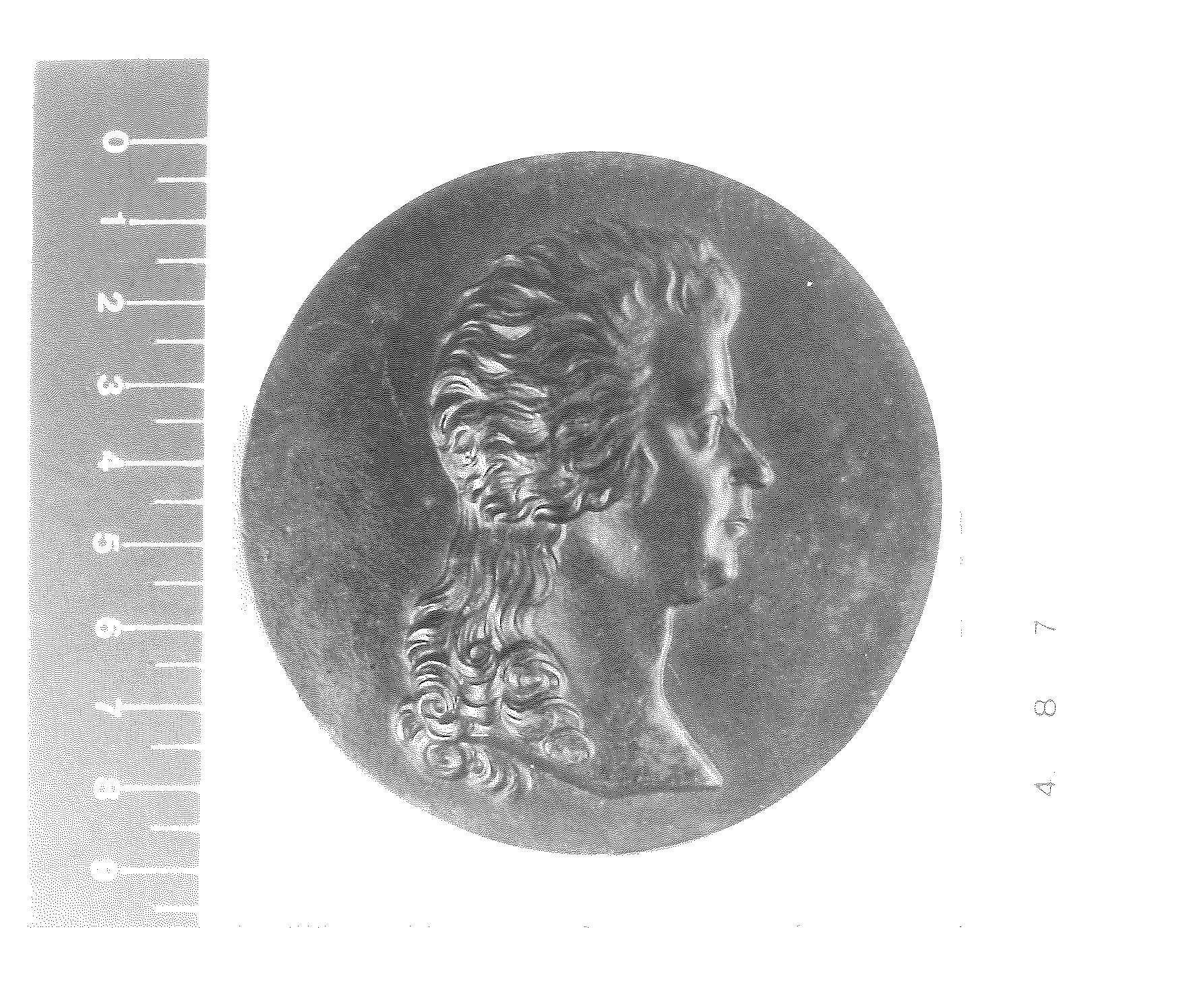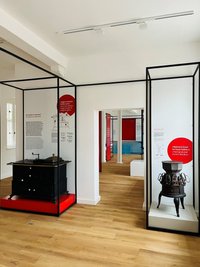Eisenguss; Bildnismedaillon; geschwärzt;
Das Medaillon zeigt im Profil nach rechts den Kopf des Komponisten Wolfgang Amadeus Mozart (1756-1791) mit der Frisur "Carré de Grecque". Das Modell hatte Leonhard Posch ursprünglich 1788 gefertigt. Bei diesem Exemplar handelt es sich vermutlich um einen Guss der Sayner Hütte. Auf der Rückseite ist folgende Inschrift zu erkennen: "Mozart". Außerdem verfügt das Medaillon über eine Aufhängeöse.
en









